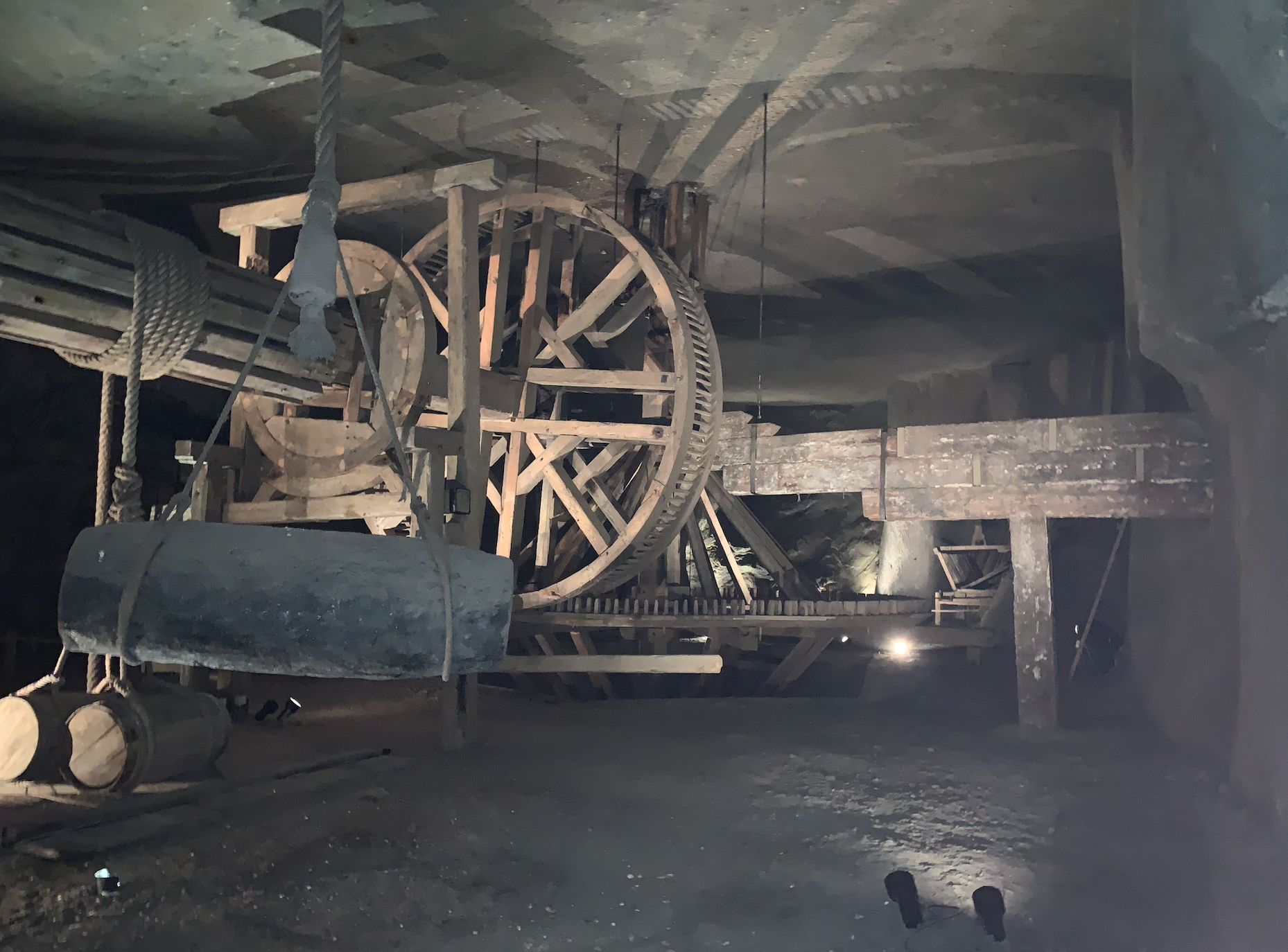
In November, I got to go on a trip I'll probably write several posts about. Here's the first of them.
I took the photo above in the salt mines in Wieliczka, Poland. (If you want to see many other photos I took on that tour, please feel free to check out my Instagram post-my account name is my name--from November 25, 2023.) If you ever have a chance to visit those salt mines or any others, I suggest you take advantage of the opportunity. While the natural formations and colors and types of salt intrigued me, what struck me most was the engineering that went into creating these underground rooms from which people excavated tons of salt and in which they still found the time and energy to create works of art.
When miners created and worked in these subterranean (100 meters below the earth's surface!!) structures, they did so without the benefits of modern machines or electricity. They had to figure out how to get air and light down there, how not to let the rocks collapse on top of them as they cracked away more and more salt, and how to carry the salt up and out. They made tunnels. They had mechanical systems for bringing salt up and carts down. They moved water. They brought people and horses down and back up using many different systems over time. Eventually, they installed electricity, telephones, and even WiFi down there. This is a lot of engineering to harvest salt, but humans figured out how to make all of these marvels happen.
On our trip to Poland and Slovakia, we also toured engineering feats that resulted in the building of castles and cathedrals, in changing the ground levels of cities, in adapting to time and place.
And we went to Aushewitz, where the engineering marvels came in the form of figuring out how to transport, murder, and dispose of humans as efficiently as possible.
The human mind is capable of solving so many kinds of problems. What are the issues you'd like to put your name and abilities behind? Let's engineer for all good things. Please share your thoughts in the comments.